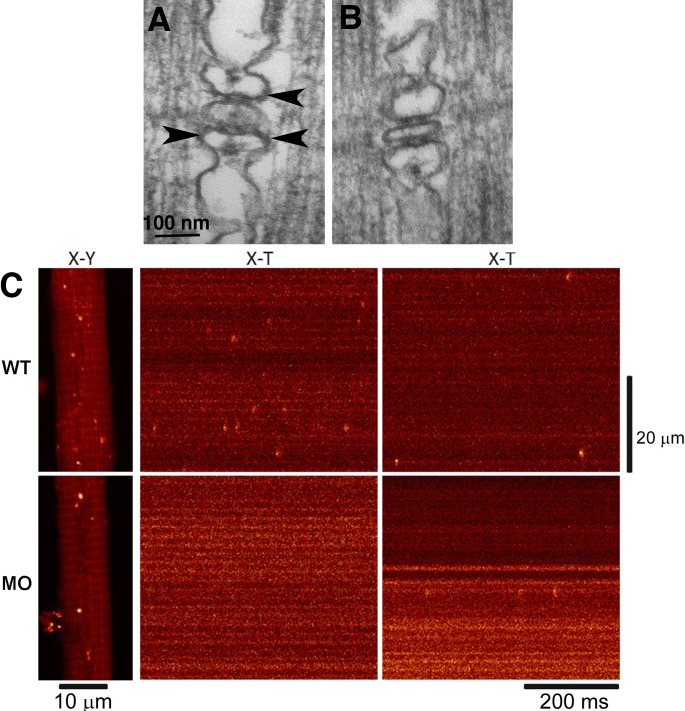Figure 9.
RYR3 in a parajunctional position are necessary for the production of sparks in zebrafish muscle. (A) Triad in a 72 h postfertilization larva. Two sets of feet (RYR1) connect SR to the central T tubule profile. Additional feet profiles in a parajunctional position (arrowheads) have been proposed to be RYR3 (Felder and Franzini-Armstrong, 2002). (B) One-cell-stage embryos were injected with a morpholino designed to specifically silence RYR3 expression. In triads of larvae at 72 h postfertilization, RYR1 position was normal, but parajunctional feet were essentially missing. (C) The Ca2+ sparks frequency in WT and morpholino-injected (MO) embryos dropped in correspondence to the absence of parajunctional feet. Reprinted from Perni et al. (2015).

